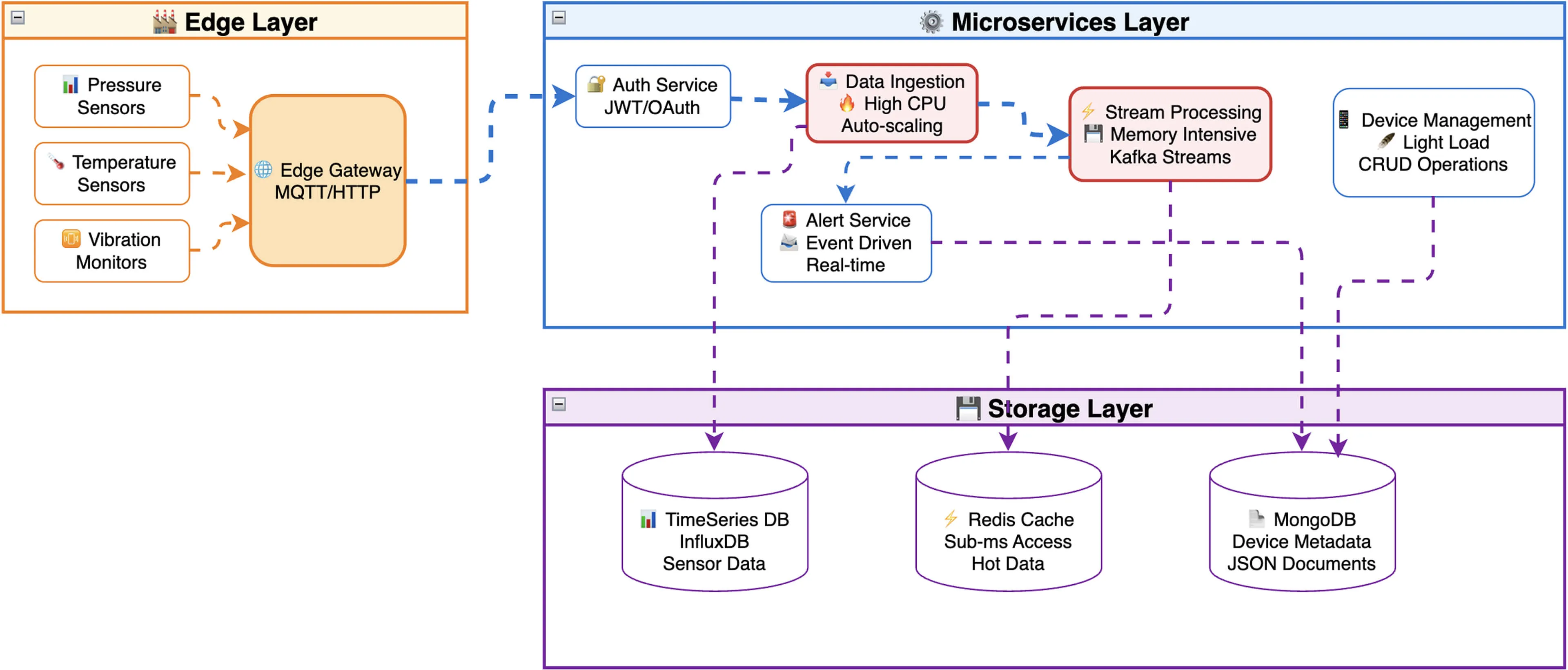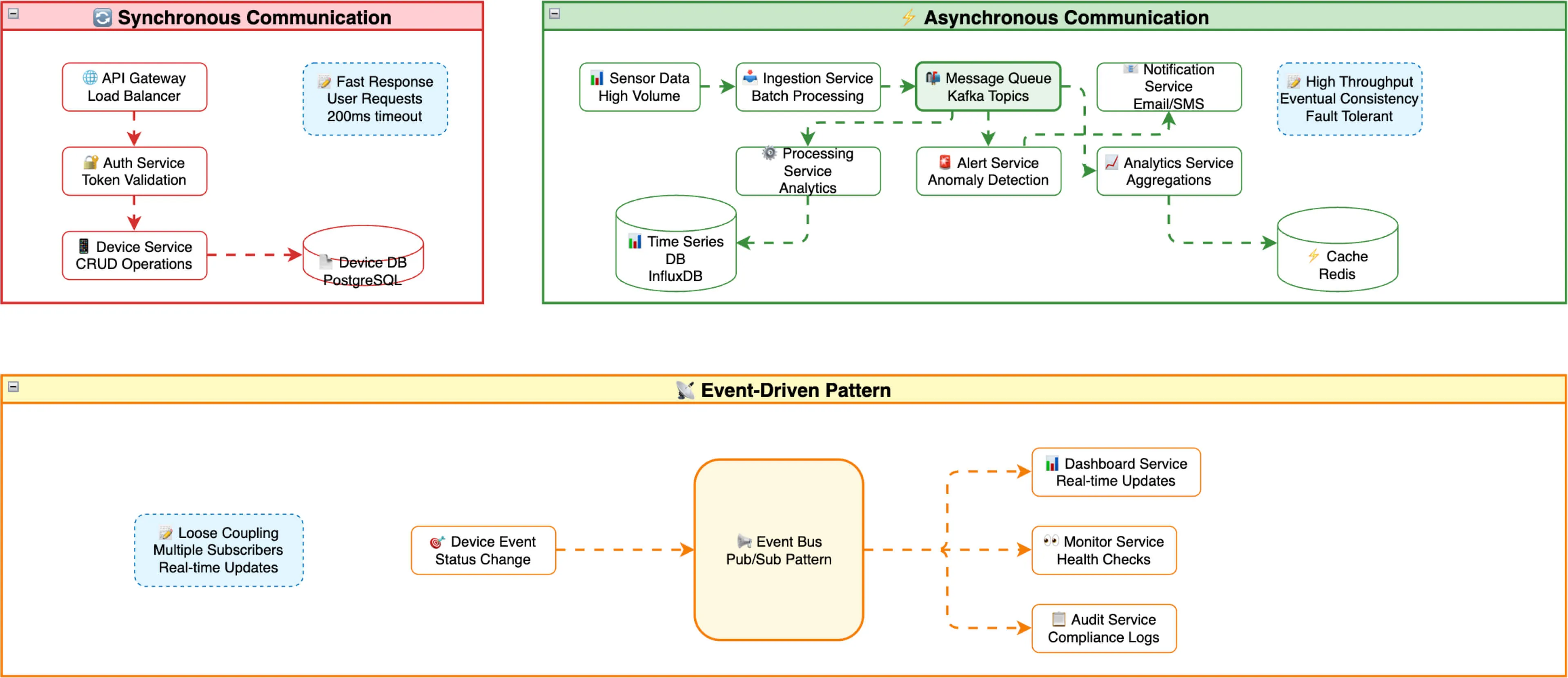When you're assigned with designing an application, one of the first questions that probably comes to your mind is whether to design it as a microservice or as a monolith.
What may appear to be a simple and harmless decision can actually have far-reaching consequences, which are often underestimated. Choosing the wrong path can be costly, not just in terms of money but also in the time it takes to build the application and implement future updates.
The right approach depends entirely on the specific problem you’re addressing and the trade-offs you’re willing to accept—there’s no generic industrial IoT solution.
Quick Comparison: Microservices vs. Monoliths
Common IoT Solution Architecture Challenges
Modern systems typically include several interconnected components that need to work together effortlessly. While monoliths are simple to start with, microservices architecture offer long-term advantages for large, scalable, and agile applications.
Most teams start with a monolithic approach because it feels straightforward. You have only one codebase, one database, and one deployment. However, as your system grows, certain pain points become apparent.
When your data ingestion component needs more CPU usage during peak hours, you end up scaling your entire application. Your lightweight dashboard service will get the same resources as your CPU-intensive stream processing ingestion service.
This becomes particularly expensive when you're processing millions of sensor readings per second but only serving a handful of dashboard users, which does not need that level of scaling.
1. Technology Constraints
You're locked into whatever technology stack you chose initially. Need a time-series database for efficient sensor data storage? Too bad if you started with PostgreSQL. Wanted to use Kafka for real-time streaming? No, you will have to retrofit it into your existing architecture.
2. IoT Solution Deployment Anxiety
Every deployment is high stakes for the development team. A small bug fix in your dashboard service code means redeploying the entire application, including your critical data processing services. These kind of steps often lead to longer IoT deployment cycles and more cautious development practices.
When is monolithic architecture recommended?
Monolithic architecture is only recommended in scenarios, particularly when simplicity, standardised technology stack, ease of development, and fast-paced deployment are prioritized. If the application’s scalability requirements are small and there are no immediate plans for significant growth, going with the monolithic way can be sufficient.
So now the question arises for us.
Why Microservices Make Sense for Industrial IoT
Microservices architecture breaks your application into smaller, independent and manageable services. Each service handles a specific responsibility and can be developed, deployed, and scaled independently without the need for unwanted scaling of the entire system.
We can understand this with the following architecture diagram:

1. Independent Scaling
Instead of scaling everything together, you can scale just what needs it. Your ingestion service can run on multiple high-CPU instances while your dashboard runs on a single lightweight server.
2. Technology Freedom
Different services can use different technologies. Your sensor data might work best with InfluxDB, while your user profiles fit perfectly in PostgreSQL.
Each service is optimized for its use case – sensor ingestion might use InfluxDB with Java, user management could use PostgreSQL with Java, and stream processing might use Kafka Streams with Java.
3. Safer Deployments
Whenever you fix a bug in your dashboard service, now you will only deploy that service. Your critical data processing service continues running the stable version it was already using for the application to work seamlessly. These updates help the application run smoother and be technical debt-free. IoT Deployment gets safely executed without tampering with any other running services.
As you can see in the following architecture diagram, we have provided how a typical industrial IoT application will look:

Technical Trade-offs to Consider
Microservices are not magic. They solve certain problems but introduce a whole lot of other ones as well.
1. Network Complexity
In a monolith architecture, calling another component is a simple method; your code is inside the same mammoth of a service. But with microservices, things get a little bit tricky; it becomes a network request that can fail, timeout, or be slow, and sometimes very slow.
Sure, we can provide the proper error handling, but if not taken care of properly, it becomes a nightmare as well.
2. Data Consistency Challenges
The transactions become very complex. You cannot just wrap multiple operations in a database transaction when they span across different services. For example, your event service releases an event, and the receiving end of the services will get the data or event in a delayed form, not like a regular API flow. So, the data inconsistency will be minimal, but it will be there.
All this is happening in a very complex microservice architecture. So, while we implement such complexity, we have to take care of these challenges. Because if we do not take care of this, technical debt gets increasingly high.
Practical Implementation Patterns
1. Event-Driven Communication: Use asynchronous messaging to reduce coupling between services. Instead of direct service calls, services can publish events when sensor data is processed, allowing other services to react independently.
2. Service Ownership: Each service owns its data completely. The device management service handles device information in its own database, while the analytics service maintains device metrics in a separate database with only references to device IDs, not foreign key constraints.
3. Observability is Critical: With distributed services, you will need proper monitoring. Services should include proper tracing, metrics collection, and timing measurements to understand system behaviour and performance.
A detailed flow diagram explaining the synchronous, asynchronous, and event-driven systems for better understanding is provided below:

Final Thoughts
Microservices are not just a buzzword – they offer real, long-term value for the large and complicated systems. They enable developers for faster delivery, higher availability, and better flexibility in terms of managing the system at hand.
Understanding these trade-offs ensures that architectural decisions are thoughtful and tailored to meet specific needs.
Microservice architecture can solve real problems in industrial IoT systems or applications, having scaling and technology choice. However, they come with a cost. You trade your development simplicity for operational complexity.
That’s why the conversation does not end here.
In our next post, we’ll dive into event-driven architecture and Dead Letter Queues (DLQs) — the sustainability layer that keeps your system running when everything else is failing.
We’ll walk through how asynchronous messaging allows services to operate independently, why DLQs act as your “safe haven” for those unavoidable failures, and explore resilient patterns that actually work: smart retries that won’t flood your logs, deduplication that saves your sanity, and graceful degradation that ensures the system stays up.
Whether you’re managing millions of sensors or trying to make sure critical alerts don’t disappear into the void, these aren’t just theoretical patterns — they’re the difference between sipping your “JAVA” in peace or getting pinged every night.
Building microservices is one thing. Keeping them resilient in production? That’s where event-driven design shows its real strength.






.jpg)

%20(1).jpg)


